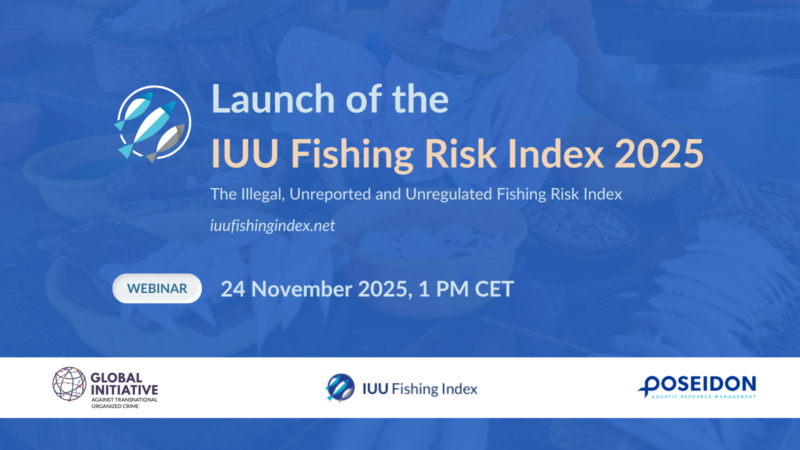IUU Fishing Risk Index 2025 – Global Initiative against Transnational Organized Crime (GI-TOC)

Report on the 2025 IUU Fishing Risk Index and Sustainable Development Goals
Introduction: A Tool for Monitoring SDG 14.4
- The Illegal, Unreported, and Unregulated (IUU) Fishing Risk Index, launched in 2019, serves as a critical instrument for assessing global progress towards Sustainable Development Goal 14, specifically Target 14.4, which calls for an end to IUU fishing. The Index provides a framework for benchmarking the vulnerability, prevalence, and response of nations to IUU fishing, supporting the conservation and sustainable use of marine resources.
Index Scope and Methodology
- The Index evaluates all 152 coastal countries using a suite of 40 indicators. Individual country profiles provide scores and allow for comparison against regional and ocean basin averages, offering a transparent mechanism for tracking national efforts to achieve SDG 14.
Key Findings of the 2025 Index: Challenges to SDG Achievement
- Data Deficiencies in SDG Monitoring: There is a persistent lack of reliable, standardized estimates of IUU fishing catches. This data gap severely hampers the ability to accurately measure progress against SDG Target 14.4 and formulate effective policies.
- Threats to Marine Ecosystems and Governance: Despite recent international and national actions, IUU fishing malpractice remains a serious concern. This undermines the protection of marine biodiversity (SDG 14) and weakens the rule of law and institutional governance (SDG 16).
- Economic Incentives Undermining Sustainability: Significant financial incentives for IUU fishing persist for both large- and small-scale operations. These economic drivers work directly against the principles of sustainable economic growth (SDG 8) and the long-term health of marine ecosystems.
Dissemination of Findings for Stakeholder Action
- A webinar scheduled for 24 November at 1:00 p.m. CET will officially release the 2025 Index update. The event is intended to inform interested parties of key findings and facilitate discussion on ongoing developments to combat IUU fishing in alignment with global sustainability targets.
Analysis of SDGs, Targets, and Indicators in the Article
-
Which SDGs are addressed or connected to the issues highlighted in the article?
The article directly addresses issues related to Sustainable Development Goal 14: Life Below Water. This goal is focused on the conservation and sustainable use of the oceans, seas, and marine resources for sustainable development. The article’s entire subject is illegal, unreported, and unregulated (IUU) fishing, which is a primary threat to marine ecosystems, fish stocks, and the sustainable management of marine resources, placing it squarely within the scope of SDG 14.
-
What specific targets under those SDGs can be identified based on the article’s content?
Based on the article’s focus on combating IUU fishing, the following specific SDG target can be identified:
- Target 14.4: By 2020, effectively regulate harvesting and end overfishing, illegal, unreported and unregulated fishing and destructive fishing practices and implement science-based management plans, in order to restore fish stocks in the shortest time feasible, at least to levels that can produce maximum sustainable yield as determined by their biological characteristics.
The article’s discussion of the “IUU Fishing Risk Index” as a tool to benchmark and rank countries on their “vulnerability to, prevalence of and response to illegal, unreported and unregulated (IUU) fishing” is a direct effort to address and manage the problem described in Target 14.4.
-
Are there any indicators mentioned or implied in the article that can be used to measure progress towards the identified targets?
Yes, the article explicitly and implicitly refers to indicators used to measure progress:
- Explicit Indicators: The article introduces the “IUU Fishing Risk Index,” which is itself a composite indicator. It states that for each of the 152 coastal countries, “a score is calculated based on a suite of 40 indicators.” These 40 indicators measure a country’s performance across three categories mentioned in the text: vulnerability, prevalence, and response to IUU fishing.
- Implied Indicators: The article highlights a critical gap by noting “a lack of reliable estimates of IUU fishing that cover all countries and use a standardized methodology to generate comprehensive and reliable volumes and values for IUU fish catches.” This implies the need for, and the current absence of, standardized indicators for the volume and value of IUU fishing, which are essential for measuring the scale of the problem and progress towards eliminating it.
-
Create a table with three columns titled ‘SDGs, Targets and Indicators” to present the findings from analyzing the article.
SDGs Targets Indicators SDG 14: Life Below Water Target 14.4: End illegal, unreported and unregulated fishing and destructive fishing practices. - The IUU Fishing Risk Index.
- The suite of 40 indicators used by the Index to measure a country’s vulnerability, prevalence, and response to IUU fishing.
- (Implied) Reliable estimates of volumes and values for IUU fish catches using a standardized methodology.
Source: globalinitiative.net
What is Your Reaction?
 Like
0
Like
0
 Dislike
0
Dislike
0
 Love
0
Love
0
 Funny
0
Funny
0
 Angry
0
Angry
0
 Sad
0
Sad
0
 Wow
0
Wow
0



















































.jpg.webp?itok=0ZsAnae9#)























